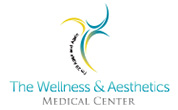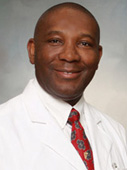Intramuscular Tear Treatment in Pleasanton, TX

If muscle pain, swelling, or loss of function is affecting your ability to walk, run, or stand, you may be suffering from an intramuscular tear. Muscle injury usually occurs during strenuous activities like sports, high impact exercise, heavy physical labor, or lifting. One wrong move or hard pull on a muscle may strain or even tear it, causing severe pain and impairing movement.
Regenerative medicine offers one of the most effective muscle tear treatments known to science: stem cell therapy. This treatment may repair your torn muscle without the need for invasive surgeries or potentially dangerous medications.
To speak about your intramuscular tear with a highly trained, compassionate provider in Pleasanton, call (210) 941-4815 or contact Dr. Vernon Williams online.
What are the symptoms of intramuscular tear?
When you exert too much force on your muscle you risk tearing it. Your muscles are flexible, but overextending them abruptly can strain them, causing a painful tear. Symptoms include:
- a straining or burning sensation of the affected muscle at the time of injury, followed by severe pain
- inability to flex the affected muscle without extreme pain
- walking with a limp and limited mobility if leg is affected
- loss of function or reduced range of motion if your arm is affected
- pain, swelling, and tenderness in the affected area
Muscle tears are more common among people who participate in strenuous physical activities like sports or physical labor. However, a hard impact, stressful muscle strain, or car accident can also cause a muscle tear.
How are intramuscular tears treated?
Potentially dangerous medications or risky, expensive surgeries aren’t always necessary. Stem cell therapy using live-nucleated cells may aid in your body’s ability to reduce or eliminate your pain and stimulate natural muscle tissue restoration – cell by cell.
Unlike surgery, which removes flesh and bone, regenerative medicine applies live harvested stem cells. These are injected directly into your pain site, stimulating your damaged cells to regenerate, gradually reconstructing your painful tissue, reducing or eliminating your pain, repairing your muscle, and restoring your range of movement.
Your provider will use live x-ray or ultrasound imaging for guidance, so the injection will be placed precisely into the area where your damaged cells are causing your pain.
The live-nucleated cells introduced into your tissue may continue producing human growth factors for weeks, or even months. The duration of active stem cell therapy varies depending on your age, body type, genetics, and injury severity. Treatment success rates also vary, as with all medical procedures. Our goal is to enable you to return to your regular work and leisure activities as much as possible.
How do stem cells regenerate tissue?
When the cells in your muscle become injured, they send out biochemical signals via your endocrine system. Stem cells respond to those signals, rushing to the injured area and releasing proteins that nourish and stimulate your cells to begin regenerating.
Stem cells dock next to your cells and release:
- growth factors
- cytokines
- chemokines
These potent proteins then activate T-cells, opening up your blood vessels and forming new ones. Then the cells migrate out of your blood vessels and into the tissues surrounding them, stimulating your cells to regenerate your muscle, reduce your inflammation, and help regulate your immune system.
Where do these live stem cells come from?
We source stem cells exclusively from the umbilical cord blood of healthy newborn babies. When a pregnant woman decides not to keep and store her unborn child’s umbilical cord, she may wish to donate it. After the mother signs an informed consent form, her practitioner will do a blood test and a medical and personal review. If the new mother meets all donor eligibility requirements, her child’s umbilical cord blood is collected in a sterile pouch and sent to the lab for processing, within 48 hrs., using proprietary methods.
A sample of the finished product is tested by an independent third-party lab for sterility. Once the lab reports have passed all regulatory requirements, the umbilical cord stem cells are able to be distributed.
Are umbilical cord stem cells FDA approved?
The FDA recently confirmed there is only one registered and approved stem cell product on the market: umbilical cord blood-derived hematopoietic progenitor cells (blood forming stem cells) used for certain indications. While there is enormous promise in stem cell therapies, and thousands of ongoing experiments trying to establish efficacy, stem cell treatments do not yet meet the FDA’s scientific approval standard.
Practitioners tapping into this enormous promise of stem cells for any therapeutic use must exercise their professional judgment and expertise. We urge anyone embarking on the use of stem cell therapies to consult the national health data bases to evaluate current clinical trial information, and the FDA’s website on human tissue to get its current therapy evaluations.
In 2018 the FDA’s commissioner and research director reported that the agency will be incorporating some “new concepts for how small investigators and firms can seek and meet the approval standard for products through efficient expedited pathways.” You can keep up with latest developments on the FDA’s website.
How many cells does it take to treat my intramuscular tear?
Modern scientific research and experience during the past 20 years has given us a robust protocol for many different types of injuries. After examining your medical history and general health, as well as determining the severity of your injury, your healthcare provider will decide how many million cells are needed to treat you as thoroughly and effectively as possible for your specific injuries and circumstances.
Is it normal to have an inflammatory response after my injection?
It’s common to experience an inflammatory response after your stem cell injection. Such a response doesn’t mean your body is rejecting the cells. Actually, it’s usually a positive sign that your live cells are initiating a healing response.
The degree of inflammatory response to the live-nucleated cells can vary based on:
- the levels of IL-6 within your joint or tissue
- the severity of damage and current inflammation in your joint
- having PRP therapy with a stem cell injection increases the probability of an inflammatory response
Will I be given an anesthetic?
Your healthcare provider will probably give you a small amount of local anesthetic to numb the needle pathway on your skin. However, studies show that injecting large amounts of local anesthetic into the area being treated may damage the live-nucleated cells.
How long does it take to get relief?
You’ll probably experience pain relief right after your treatment. Tissue regeneration times vary depending on your injury type and how closely you follow your post-treatment care and rehabilitation program. The state of your health and the amount of rest you get during recovery also play a role in your relief rate.
Who can benefit from stem cell therapy?
Most patients who desire efficacious regenerative healing beyond just symptom relief are good stem cell therapy candidates. If you prefer to avoid painful surgeries and potentially addictive prescription medications, stem cell therapy may be the treatment you’ve been seeking.
Speak with a stem cell therapy specialist to discuss your current medical condition, expectations, and treatment options in greater detail.
What are the risks or side effects of stem cell injections?
As with any other injection procedure, there is a very small risk of bacterial infection. This infection is not caused by or associated with the injected cells. If you experience severe pain, bleeding, or swelling at your injection site, or if you experience fever, nausea, dizziness, vomiting, or any other concerning symptoms, don’t wait—call your medical provider or seek emergency medical care right away.
Reserve Your Appointment Now
Our experienced and compassionate providers have helped hundreds of pain patients unlock the power of stem cell therapy and avoid expensive, time-consuming, and potentially hazardous surgeries. Now they’re prepared to customize your stem cell treatment plan.
To speak with an intramuscular tear stem cell specialist today in Pleasanton, call (210) 941-4815 or contact Dr. Vernon Williams online.
The Wellness & Aesthetics Medical Center
Address
540 Oak Centre DrSuite 114
San Antonio, TX 78258
(210) 941-4815
www.twaamc.com
Hours
Mon:
9:00 am - 5:00 pm
Tue:
9:00 am - 5:00 pm
Wed:
9:00 am - 5:00 pm
Thu:
9:00 am - 5:00 pm
Fri:
9:00 am - 5:00 pm
Sat:
Closed
Sun:
Closed





